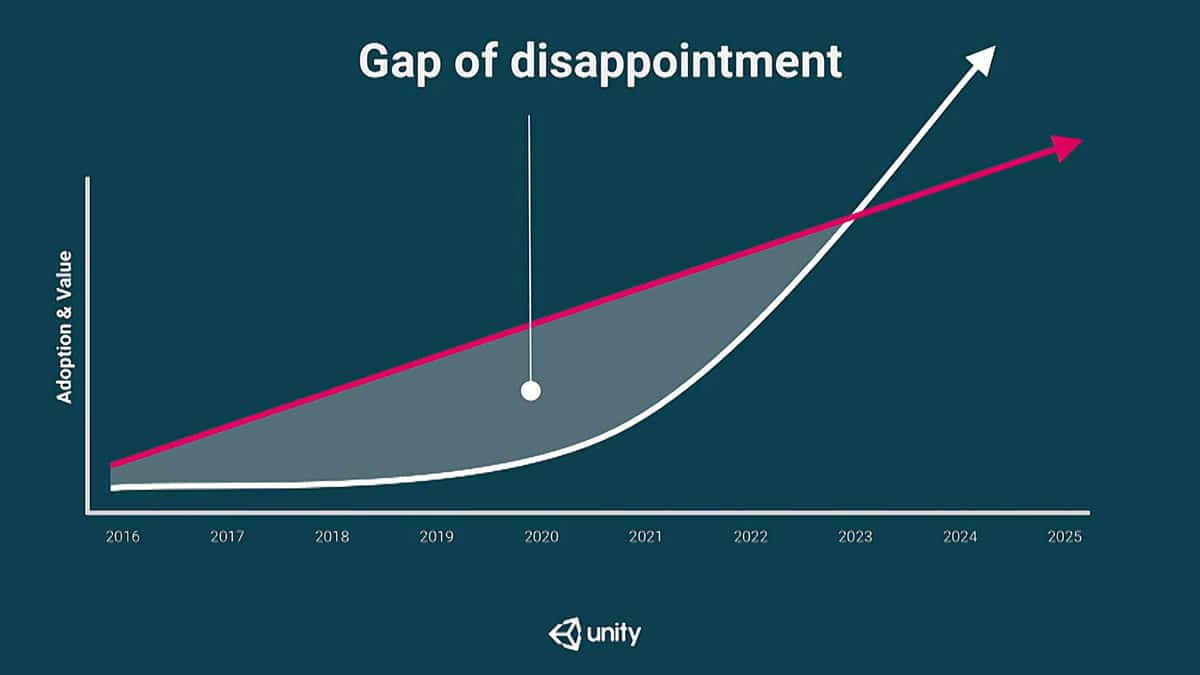
A question is being asked with increasing frequency: When will VR truly arrive as a mainstream consumer phenomenon? And is that day near enough to avoid a shakeout? Related is a question of if the sector is over-funded.
Like other tech revolutions, it’s a matter of timing. In the long run, the sector is likely under-funded when considering its eventual transformation on entertainment, commerce and life. But practical realities rule the near term.
The question is really about whether or not VR’s ubiquity — supporting adequate revenue for content creation and other functions — arrives before current funding levels run out? And If no, will we see an industry shakeout?
Much of this comes down to cash positions and burn rates of startups that occupy the space today. Ultimately, can they sustain until we reach a more mature market, given current capital, additional funding or acquisition?
100 Million Served

The likely answer is that some will and many won’t. But a more quantifiable analysis is in order. This applies mostly to venture-backed startups, rather than the deep-pocketed and risk-tolerant Googles and Facebooks of the world.
Stepping back, we’re in the John Riccitiello camp that looks at unit penetration required to support media and content ecosystems. That installed hardware base is about 100 million units, as history has taught us (e.g. smartphones). We’re now at 17 million.
Based on technological and cost realities, it will take about two cycles of Moore’s law to get VR headsets to a quality and price level (sub-$1000 for “all in” premium VR) to make them tenable for such unit sales.
“[When} the aggregate spend for a consumer is $2000, that’s a lot of money,” said Riccitiello at VRLA. “And it’s really hard to come up with a product in any form of technology other than a brand new car that sells in any significant volume at price points like that.”
Though we’re seeing positive movement, a sub-$1k “all-in” price point for tier-1 VR likely won’t be here until 2019. So that’s the rough time frame which can be measured against current funding levels, cash positions and burn rates of today’s field of VR startups.
Sector funding levels last year were $2.3 billion. And if we examine the typical funnel of companies that move on to additional funding rounds — combined with a longer timeline for hardware ubiquity — it could spell shakeout.
Further supporting this position is research from BOM that reveals a disparity between VR companies’ funding needs and their expected revenue timeline/scope. Applying typical revenue multiples, the valuations don’t add up.
Timing is Everything

As for AR, the same framework can apply, but with different timing. We believe the 100 million magic number for AR (glasses) penetration will happen by 2021, as recently examined by our friend Shel Israel at the Transformation Group.
Oculus’ Michael Abrash meanwhile asserts that “true AR” is 5-10 years away (a different question). Either way, a full scale revolution isn’t as imminent as industry noise would indicate. There will at least be a shakeout in attitude.
As this unfolds, the VR and AR worlds will assume a more sober and measured persona. We’ll see less cheerleading — considered passe in typical industry troughs — and more discerned ROI vetting from investors and industry giants.
But none of this is meant to disparage VR and AR… only the exuberance levels that are possibly driving unrealistic expectations on timing. The latter can can be damaging, as we’ve learned in past tech revolutions.
In other words, excitement levels aren’t misplaced… they might just be ill-timed. Consider the dot-com bubble, where market valuations for e-commerce ended up exceeding expectations eventually… but not before a sizable correction.
Any VR/AR shakeout won’t be as big as the dot-bomb correction of course, but we believe it will happen on some level. It’s more a question of when and how big? Here’s hoping that we’re wrong, or at least that the answer is not very.
In the meantime this narrative once again invokes the classic Bill Gates quote: “We always overestimate the change that will occur in the next two years and underestimate the change that will occur in the next ten.”
Disclosure: ARtillry has no financial stake in the companies mentioned in this post, nor received payment for its production. Disclosure and ethics policy can be seen here.
Header image credit: Andrew Lucas
